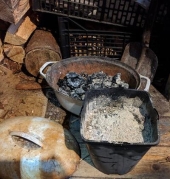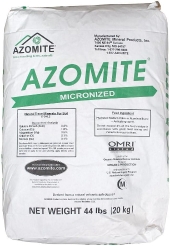




 1
1




Iterations are fine, we don't have to be perfect
My 2nd Location:Florida HardinessZone:10 AHS:10 GDD:8500 Rainfall:2in/mth winter, 8in/mth summer, Soil:Sand pH8 Flat
 2
2





















List of Bryant RedHawk's Epic Soil Series Threads We love visitors, that's why we live in a secluded cabin deep in the woods. "Buzzard's Roost (Asnikiye Heca) Farm." Promoting permaculture to save our planet.
















David Miller wrote:Kevin, thank for posting! If you have time for a followup tangent I am trying to brainstorm on ways to bring my soil ph up for Truffle production on the East Coast of the US (Blue Ridge Mountains VA). The prescribed culture for truffle production calls for 7-8.5ph and my soil sits at a beautiful and even 6. Your post about Biochar struck me as a much better solution than annual liming. I wonder if there is knowledge out there about long term impact of ph change on biochar addition to soil. Any thoughts?
List of Bryant RedHawk's Epic Soil Series Threads We love visitors, that's why we live in a secluded cabin deep in the woods. "Buzzard's Roost (Asnikiye Heca) Farm." Promoting permaculture to save our planet.




kevin cyndrz wrote:Thanks.
Ok so the alternative amendments I'm currently considering now are:
1. AZOMITE
Benefits: contains 70 minerals and trace elements
Disadvantages: Unsustainably mined from single source in Utah.
Source: Volcanic ash that was washed down mineral rich rivers and deposited in a seabed 30 million years ago.
CEC: ~27 meq/100 g
pH: 8
Chemical Makeup:
30.7806% Silicon
6% Aluminium
2.6230% Calcium, 0.4704% Magnesium
0.15% Nitrogen, 0.15% Phosphorous, 4.3417% Potassium
0.85% Soduim
2. BIOCHAR
Different biochar's may have very different characteristics depending on source material and the type of pyrolysis used
Benefits:
- contains microscopic vascular hollowed tubes that are potential havens for microbes, moisture, and vital nutrients.
- sequesters carbon for (potentially) thousands of years and can be produced in a manner that is carbon negative.
- creates a soil that can hold much greater amounts of greenhouse gases.
- can slow down soil degradation/erosion.
- excess gases from the production process can be stored and used to fuel other things.
- in general, no additional treatments are required.
Disadvantages:
- may be created in a unsustainable manner (but can also be created sustainably)
- may create greenhouse gases in the production process (but some of these gases may also be captured)
- unmatured or non-biologically activated "raw" biochar may take a longer time to work and will initially leach out vital nutrients if applied directly to the soil.
Source: Biomass that is burned in the absence of oxygen.
CEC:
- Raw biochar: ~10 meq/100 g
- Biologically inoculated, composted, and/or "matured" biochar: > 100 meq/100 g
pH: 8.5-9.5
Chemical makeup: Predominately carbon
Does anyone else have any suggestions on increasing soil pH? Is there a specific cover crop that works better than others?
Living free starts with understanding ones own emotions and emotion affects and controls us.

|
And then the entire population worshiped me like unto a god. Well, me and this tiny ad:
The new purple deck of permaculture playing cards
https://www.kickstarter.com/projects/paulwheaton/garden-cards
|


